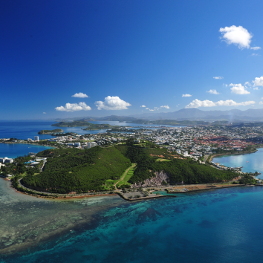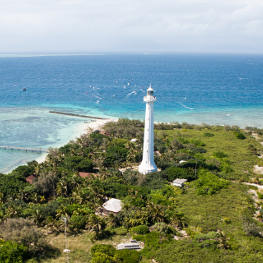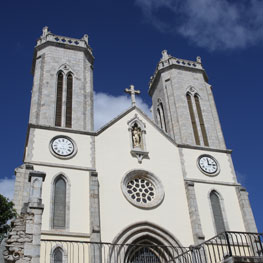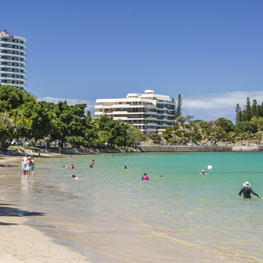The Place des Cocotiers (Coconut Tree Square) is, since the end of the 19th century, the heart of the city of Nouméa. Over a surface of almost 4 hectares (and 400 meters long from east to west), its vast esplanade with a slight slope is a place of meetings, tranquility and festivities all year long.
In 1855, Paul Coffyn, a brilliant engineer, was put in charge of drawing the first urban plans for what the future city of Port-de France (which became Nouméa in 1866) was to become. He planned on building a square where it is located today, which was then covered by the sea.
Once the first embankments were built, in 1861, the first portion of the square was called “jardin de l'infanterie marine” (the marine infantery gardens). Located at the eastern extremity of today's Place des Cocotiers, it took its definitive name of Place Feillet in 1903.
In the heart of the city
Voir plus-
![Music Kiosk]()
When soldiers plant coconut trees
The military, who were the first “owners” of the location, planted many coconut trees on the square. Quickly the inhabitants started to refer to it as the “Place des Cocotiers”.
The first music kiosk dates from 1883 but was entirely reconstructed in 1986, to modern standards and using rot-proof houp wood. The superb metal harp at the top is from the original kiosk.
-
![The celestial fountain]()
The celestial fountain
New embankments built next to the future Place Feillet allowed the creation of another square, which became Place Courbet in 1885. In its center, a monumental fountain was inaugurated on September 24 1893 in commemoration of the 40th anniversary of the conquest of New Caledonia by France. Eight meters high, it represents a semi-nude lady. Named the celestial fountain, it is one of the symbols of the Place des Cocotiers with the music kiosk, both of which are listed as historic monuments. It is also the “zero” reference point for all the road mileage in New Caledonia!
-
![Place des Cocotiers Nouméa]()
The Place des Cocotiers, a beating heart
The most recent part of the Place des Cocotiers, its western extremity, was built in 1893. It was then a botanical garden with dense tropical vegetation.
All these parts of the Place des Cocotiers have remained to form a homogeneous whole. Between the Celestial fountain, and the Olry square, the Place de la Marne is nowadays the real heart of this ensemble. For example, it is where concerts are regularly held as well as markets, which animate the heart of the city.








